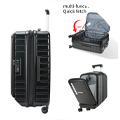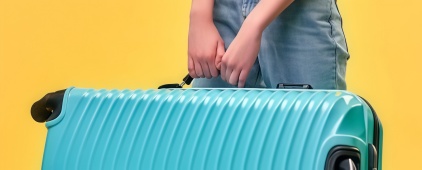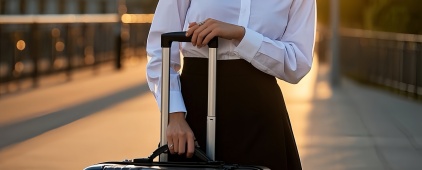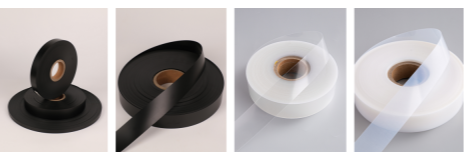Hardshell Material Deep Dive: The Pros and Cons of PC, PP, and ABS for Your Luggage Line
Hardshell Material Deep Dive: The Pros and Cons of PC, PP, and ABS for Your Luggage Line

Hardshell suitcases are a popular choice for today’s travelers. They are loved for their toughness, ability to protect items, and modern look. The key to their appeal is the materials used to make them. For brand managers and product creators, understanding the differences between Polycarbonate (PC), Polypropylene (PP), and Acrylonitrile Butadiene Styrene (ABS) is essential for building a great suitcase collection. Picking the right material shapes not just the style but also how well a suitcase handles rough use, its weight, and its place in the market. Let’s dive into what each of these strong materials offers.
Polycarbonate (PC): The Top-Notch All-Around Choice
Polycarbonate is a favorite for high-end hardshell suitcases. It blends strength and flexibility in a special way.
Key Characteristics:
-
Shock Protection: PC is made to take hits by bending slightly. This is great for air travel, where bags often get tossed around. It can flex under pressure and then return to its original shape.
-
Good Weight-to-Strength Balance: PC is strong but not too heavy. It offers solid protection without making the suitcase bulky.
Advantages:
-
Long-Lasting Toughness: PC is built to last a long time. It fights off cracks very well. This makes it dependable for people who travel a lot.
-
Fancy Look: PC has a shiny, smooth surface that looks elegant. It also takes colors and designs evenly, creating bright, lasting patterns that don’t fade.
Limitations:
-
Higher Price Tag: PC costs more than PP or ABS. Its great features and trickier production process make it pricier.
-
Scratchy Surface: While it resists cracks, PC’s glossy finish can show small scratches. A matte layer or textured design can help hide these marks.
Polypropylene (PP): The Super Light Star
When keeping things light is the main goal, polypropylene shines as the best pick.
Key Characteristics:
-
Very Light: PP is the least dense of the three materials. This makes it perfect for crafting the lightest hardshell suitcases out there.
-
Super Bendy: PP is highly flexible and bends instead of breaking. This stretchiness makes it great at avoiding cracks, especially in cold weather.
Advantages:
-
Saves Weight: PP is perfect for travelers who want to pack more without hitting airline weight limits. It helps dodge extra baggage fees.
-
Strong Yet Affordable: PP gives great toughness at a fair price. It’s ideal for mid-range and budget-friendly suitcase lines that still want to be sturdy.
Drawbacks:
-
Less Stiff: PP is bendy but not as firm as PC. This can make it feel a bit soft, which some users might notice.
-
Plain Look: PP usually has a matte surface. Getting a shiny, fancy look is harder, which limits some upscale design choices.
Acrylonitrile Butadiene Styrene (ABS): The Handy and Budget-Friendly Choice
ABS is a common material for low-cost and mid-range suitcase lines. It stands out where saving money is important.
Key Characteristics:
-
Very Firm: ABS is super stiff and gives strong protection for its price.
-
Easy to Shape: Makers like ABS because it’s simple to form into different patterns and textures. This allows creative designs at a lower cost.
Advantages:
-
Cheapest Option: ABS is much less expensive than PC or PP. It’s great for promotional lines or buyers watching their wallets.
-
Hides Scratches Well: ABS takes deep textures, like diamond or honeycomb patterns. These help cover up scratches and wear over time.
Disadvantages:
-
Weaker Against Hard Hits: Compared to PC and PP, ABS is more likely to crack. It doesn’t bend much under strong impacts.
-
Heavier for Its Strength: While fairly light, ABS isn’t as tough. Makers often use thicker sheets, which can add weight.
PC vs. PP vs. ABS: A Side-by-Side Look

To help you pick the best material for your suitcase line, here’s a clear comparison of the three materials:
| Feature | Polycarbonate (PC) | Polypropylene (PP) | Acrylonitrile Butadiene Styrene (ABS) |
|---|---|---|---|
| Main Strength | Shock Protection & Toughness | Lightest Weight & Bendiness | Lowest Cost & Design Options |
| Feel | Firm & Strong | Bendy & Slightly Soft | Very Firm & Hard |
| Weight | A Bit Heavy | Super Light | Pretty Light |
| Cost | Pricey | Fair | Cheap |
| Toughness | Awesome (Bends, doesn’t break) | Really Good (Very bendy) | Okay (Can crack under big hits) |
| Look | Shiny, fancy finish | Matte surface | Easy to texture, can be shiny |
| Best For | Frequent travelers, fancy & business lines | Budget travelers, light-weight focus | Starter market, promotional items |
Choosing the Right Material for Your Needs
-
For Frequent & Business Travelers: PC is usually the best choice. Its sleek, shiny look matches its great toughness. This makes it perfect for people who travel often and need stylish, reliable bags. They want suitcases that look sharp and hold up well.
-
For Travelers Who Want Light Bags: PP is the clear winner. It’s great for customers flying on airlines with strict weight rules, like budget carriers. PP offers strong performance without adding extra pounds. This makes travel easier and cheaper.
-
For Budget Shoppers or Casual Travelers: ABS gives awesome value. Its low price and many design options make it ideal for cool, affordable bags. It’s perfect for less frequent trips, like car rides or short weekend trips.
Pengteng: Your Trusted Partner in Hardshell Suitcases
For businesses looking for top-quality hardshell suitcases, Pengteng offers over 20 years of know-how. We work with PC, PP, and ABS, helping our OEM/ODM partners pick the best material for their brand’s needs. Based in Jinhua City, Zhejiang Province, our factory provides full services for wholesalers, retailers, and importers around the world. We guide you from start to finish to create suitcases that match your vision.
Conclusion
Each material—PC, PP, and ABS—has its own special strengths. Picking the right one depends on matching your product goals with the material’s features. PC is the go-to for a fancy look and top toughness. PP is best when keeping things light is the main focus. ABS is the smart pick when saving money is key. By understanding these differences, you can build a suitcase line that fits your customers’ needs perfectly. Whether it’s for frequent flyers, budget travelers, or casual users, the right material makes all the difference. A well-chosen material ensures your suitcases stand out in the market. It also keeps customers happy with reliable, stylish products.
FAQs:
Q1: Which material lasts the longest among PC, PP, and ABS?
A: Polycarbonate (PC) usually lasts the longest. It keeps its strength and resists breaking well. This makes it great for heavy, long-term use.
Q2: Is polypropylene good for international travel?
A: Yes, PP works well for international trips. Its bendiness helps it handle rough treatment during travel. Plus, its light weight is a big bonus for long flights.
Q3: Why is polycarbonate seen as a fancy material for luxury suitcases?
A: Polycarbonate is viewed as high-end because it mixes strength with style. It has awesome toughness and a shiny finish that looks elegant. This makes it perfect for sleek, durable designs.









